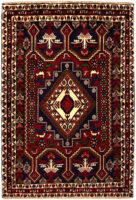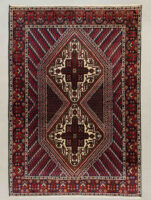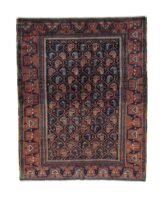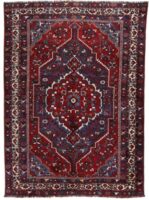Om Afshar
Afshar Shar-Babak, shahrbabak If you drive south-east from Yazd towards the town of Kirman, you will arrive at the town of Shar-Babak. The carpets made here are denser than other Afshar carpets, and the dyes are better matched. The patterns often have large, stylised medallions filled with, e.g. Miribota or...Read more
Showing all 8 results
-

Afshar Taske
tk27231cm x 30cmkr. 1.800,- -

Afshar Tæppe
6745149cm x 100cmkr. 4.200,- -

Afshar Tæppe
TT0143197cm x 140cmkr. 5.800,- -

AFSHAR Tæppe
MM94854574188cm x 150cmProduct from remote storageOnline
Priskr. 12.000kr. 9.000,- (-25%) -

Afshar Tæppe
CW33457522187cm x 156cmProduct from remote storageOnline
Priskr. 6.312kr. 4.734,- (-25%) -

Afshar Tæppe
CW29590117194cm x 153cmProduct from remote storageOnline
Priskr. 18.000kr. 13.500,- (-25%) -

Afshar Tæppe
CW11857541272cm x 148cmProduct from remote storageOnline
Priskr. 7.728kr. 5.796,- (-25%) -

Afshar Tæppe
CW97957564238cm x 173cmProduct from remote storageOnline
Priskr. 17.760kr. 13.320,- (-25%)
Showing all 8 results
Mere om Afshar
Afshar Shar-Babak, shahrbabak
If you drive south-east from Yazd towards the town of Kirman, you will arrive at the town of Shar-Babak. The carpets made here are denser than other Afshar carpets, and the dyes are better matched. The patterns often have large, stylised medallions filled with, e.g. Miribota or stylised flower, animal or bird motifs. The knotter may also have knotted his/her name and the year into the carpet or perhaps a line from a verse. The carpets are made on cotton with Senneh knots and with knot densities of 150,000-360,000 knots per m2. One of their characteristics is that they usually have an edge stitching made of cotton instead of wool, as with most other carpets. These carpets are only rarely seen on the market today, and they are significantly better and more valuable than the other Afhsar carpets. The Afshar area stretched from Kirman in the north-east to just north of Shiraz in the south. The Afshari are of Turkish origin and were forcefully relocated from Azerbaijan by shah Tahmasp (1524.1587) because they were warriors. Today, they live as nomads and as peasants in small villages and they produce many carpets. A lot of them have retained their Turkish traditions. The nomads have kept the Turkish language and knot carpets with Ghiordes knots (Turkish knots). Even though they are nomadic carpets, you can often find them knotted on cotton. This is because the Afshari go to Kirman to sell their carpets and receive cotton as part of the trade.
Kirman-Afshar
From time to time, you will hear the name Kirman-Afshar on the market. These are almost always carpets with contrasts, consisting mostly red and blue colours. They typically have stylised medallions and flowers with large patterns on a unicoloured base. The quality varies greatly, so don’t expect this kind of Afshar carpet to last 30 years. However, they are charming carpets at very affordable prices. They are knotted from wool on cotton with Senneh knots (Persian knots) by resident peasants. Dyes are usually synthetic.
Sirdjan-Afshar, Sirjan-Afshar
Sirdjan-Afshar carpets are also knotted by resident Afshars in and around the town of Sirdjan. Here too they use Senneh knots on a cotton warp, and the dyes are blue, red and cream. The quality in this area varies greatly, and the carpets fall on the cheap end of the scale. The knot density can be as low as 80,000 per m2. During my apprenticeship in Hamburg, I sold hundreds of these kinds of carpets, in particular to Scandinavian carpet merchants. However, they are no longer available in such large quantities as back then.
Source:You are reading an extract from the book ‘Oriental Carpets, Knottet with Love’ by Martin Munkholm.
This extensive book about all that is carpets can be borrowed in Danish libraries or be bought following this link: https://belle-rugs.dk/dk/ekspertise/taeppebog/The book is published by Muusmann Forlag.For more info: http://muusmann-forlag.dk/
You can find our selection of Afshar carpets underneath.
